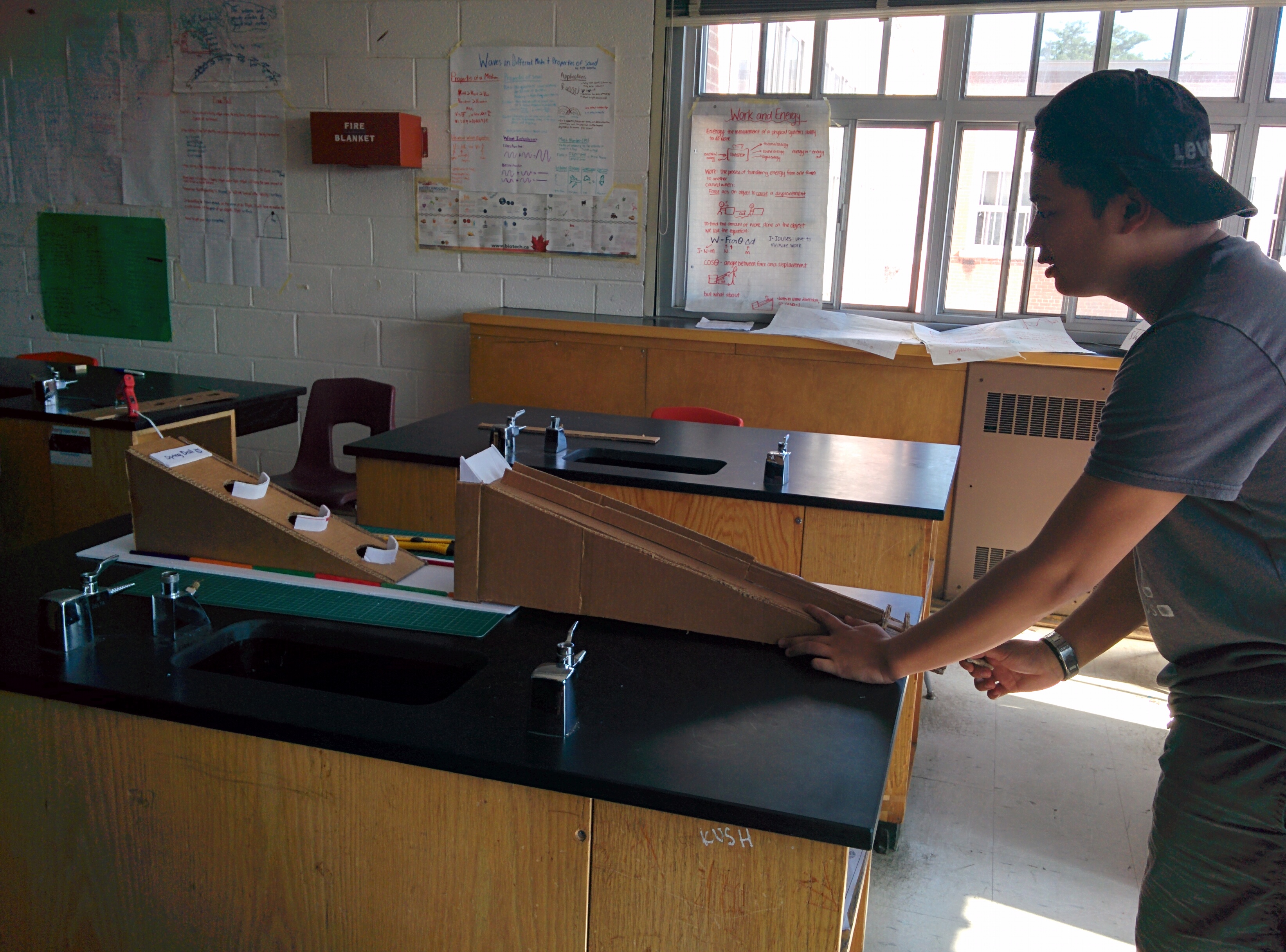September 17, 2017 Filed in:
ArticlesNassi Rafiee, teacher Toronto DSB
Nassi.rafiee@tdsb.on.ca
Many grade 12 physics students plan to pursuit engineering in their post-secondary studies. Surprisingly, many lack a clear idea about the required skillset and what to expect in their next 4 years of education.
Last year I came up with the idea of having students design a mechanical pinball machine that demonstrates the mechanics concepts in grade 12. It was originally intended to focus on team building, engineering design process, physics calculations and writing skills, however as soon as I shared the idea with students, they got so excited that they formed their groups immediately and insisted that they wanted to build it too.
After many after-school hours of collaborative work, we ended up with four very different and very interesting working prototypes of pinball machines. We showcased them in the school’s open house to potential incoming students who got a chance to test drive some of the models.
For the second year, I decided to make the project more open-ended and included a wider variety of arcade-style games. The concepts to be covered in each game were projectile motion, elastic potential energy, conservation of energy, circular motion and friction.
Students worked in groups of four and submitted their proposals with a time and cost estimate. (They were encouraged to use low cost or recyclables to build their prototypes) The final evaluation consisted of both a group component as well as an individual part.
Engineering Process, Team Element
Groups were responsible for maintaining and submitting records of their work process in an engineering notebook/portfolio. They took minutes of their meetings (in school or online) and recorded each individual’s input in the design and build process, as well as modifications or limitations of their original design. As well, they were expected to submit a hand-drawn scale diagram of their machine (as a group) and of a mechanism they contributed the most to (individually).
Problem Design
Each student was expected to make a numerical problem and solution related to their machine based on data obtained from their group’s device: e.g. what should the compression of the spring in the launching mechanism be in order for the ball to hit a target on a vertically rotating platform at a given rpm, and a given horizontal and vertical distance away. (All groups were to provide a specification table in their document, and measure the constant of their own springs in a lab that they designed themselves)
Documentation
Finally, the project intended to provide an opportunity for students to think as an aspiring entrepreneur. Groups were to give an appropriate name to their arcade game, and compose a well written instruction paragraph to explain the rules of the game to the potential end-user.
Reflection
I found the project to be very successful in bringing out many skills in the students. As a teacher I learned the value of incorporating hands on projects and applying theory to practice in engaging students, to the point that they never complained about the time demand (the last two weeks we worked in school until 5:30, up to 4 times a week).
Sample Projects
Arcade game: Pinball from OAPT Newsletter on Vimeo.
Pinball machine 
 Ski-ball
Ski-ball
Arcade Game: Circular Launch from OAPT Newsletter on Vimeo.
Circular launch!Tags: Energy, Kinematics, Momentum, Motion, STEM


